Bone health is a major health concern among aging baby boomers. Methods to ward off osteoporosis by improving calcium metabolism continue to evolve, with scientists working to sort out the most effective supplementation protocol.
Dementia is Treatable with Functional Medicine
ReCODE or The Reversal of Cognitive Decline – a new treatment paradigm for Alzheimer’s Disease and other forms of dementia
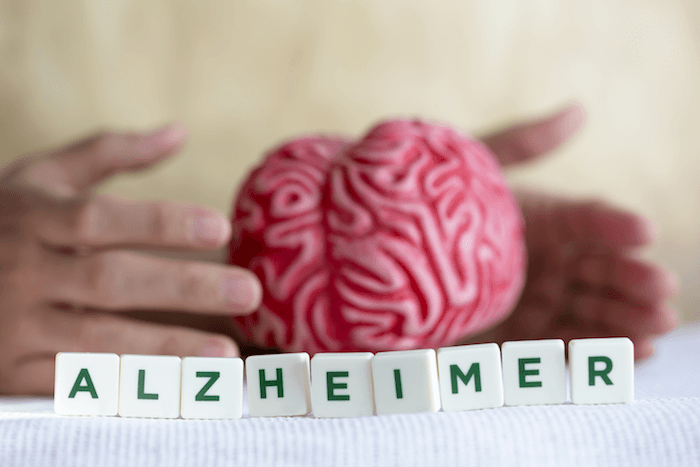
For many decades, conventional medicine has had very little to offer regarding treatment of patients suffering from dementia or cognitive decline. Alzheimer’s Disease is now the third leading cause of death in the North America, after heart disease and cancer. It is estimated that dementia will afflict approximately 50% of the next generation of senior citizens (that would be every other person between the ages of 40-60 reading this blog right now). Most seniors today feel utterly helpless as they witness the methodical deterioration of their own cognitive abilities and some have even come to accept this as a normal part of the aging process. Dementia is not a normal function of aging and should not be accepted as that. We’ve all met cancer survivors, but no one has ever met an Alzheimer’s survivor – until now.
The ReCODE program (or Reversal of COgnitive DEcline) was developed over the past decade by Dr. Dale Bredesen, the director of research for neurodegenerative disease at UCLA and the author of “The End of Alzheimer’s: The First Program to Prevent and Reverse Cognitive Decline”. This treatment program is based on addressing the several dozen mechanisms responsible for the expression of Alzheimer’s disease and is completely in alignment with the principles of integrative and functional medicine.
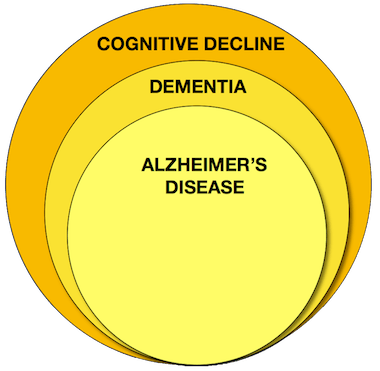 In 2017, Dr. Nikogosian trained under Dr. Bredesen in the implementation of the ReCODE program and he now proudly offers this program to his patients at Southwest Functional Medicine in the Las Vegas and Henderson area of Southern Nevada. For out-of-state and international patients, they may also access our services remotely via Skype or FaceTime consultation. For more information, please email us at info@swfunctionalmedicine.com or call us at (702) 616-4001.
In 2017, Dr. Nikogosian trained under Dr. Bredesen in the implementation of the ReCODE program and he now proudly offers this program to his patients at Southwest Functional Medicine in the Las Vegas and Henderson area of Southern Nevada. For out-of-state and international patients, they may also access our services remotely via Skype or FaceTime consultation. For more information, please email us at info@swfunctionalmedicine.com or call us at (702) 616-4001.
Before proceeding, it is important to clarify some terminology. Many patients ask what are the differences between Alzheimers disease, dementia and cognitive decline. From the perspective of what the average person sees on a day to day basis – the answer is not that much. That is is the reason why you will see these terms used interchangeably when describing this affliction. For the record, cognitive decline is a general term denoting any loss of cognitive function of which dementia is a part of. Dementia is a syndrome used to describe symptoms which impact memory, communication and performance of daily activities of which Alzheimer’s Disease is a part of. Alzheimer’s Disease is the most common type of dementia associated with beta-amyloid plaque deposits in the brain and characterized by progressive worsening of memory, language and thought. Since Alzheimer’s is used by the general public to denote any form of dementia in general – I will use Alzheimer’s to mean that for the remainder of this blog.
So what exactly is the ReCODE program? To quote Dr. Bredesen:
“Imagine you have 36 holes in your roof — because we initially identified 36 different mechanisms involved — if you patch one hole, that’s not going to help you much. You want to patch all the holes.’ Now, a drug typically patches one hole … [but you need to] patch the other 35 as well.”
The ReCODE program is a full spectrum functional medicine approach for addressing all the physiological dysfunctions (or “holes in the roof”) which ultimately present as Alzheimer’s in the patient. Your brain’s ability to perform its various activities requires connections between brain cells (also known as neurons). You have approximately 100 billion neurons in your brain and each neuron has approximately 10,000 connections called synapses. Thats over 100 quadrillion synapses per brain !! When your brain is in a state of good health, this massive number of connections maintains balance between cultivating new connections and pruning old connections which are no longer needed. Looking at this problem from a root cause perspective, Alzheimer’s begins with an imbalance between synaptoblastic activity (building or cultivating synaptic connections between neurons) and synaptoclastic activity (destroying or pruning synaptic connections between neurons). It’s all about restoring balance to the brain.
What Dr. Bredesen discovered in people with Alzheimer’s was that they were on the wrong side of this balance. Their synaptic building activity (synaptoblastic) was too low and their synaptic pruning activity (synaptoclastic) was too high. Bringing this synaptic dynamic back into balance is the final goal of the “patching the multiple holes in the roof” approach of the ReCODE program.

One of the first steps of the ReCODE program in restoring this balance is determining what subtype of Alzheimer’s the patient has:
Type 1 – INFLAMMATORY or “Hot”
• These are patients with mainly inflammatory symptoms. They have a brain which is literally “on fire” and balance cannot be restored until the inflammation has been brought under control. There have been many similarities observed between adults with this type of Alzheimer’s and children on the Autism Spectrum – with a significant overlap of successful treatment modalities for both.
Type 1.5 GLYCOTOXIC or “Sweet”
• This is a mixed subtype in between inflammatory and atrophic. This is typically associated with diabetes and insulin resistance and is the most common form of Alzheimer’s which we see and treat.
Type 2 ATROPHIC or “Cold”
• These are patients in which disease is driven by a lack essential nutrients , hormone sor other growth factors. Withdrawal of any of these factors (such as testosterone, estrogen, vitamin D or essential fatty acids to name a few) will unfavorably alter synaptic balance.
Type 3 TOXIC or “Vile”
• These are patients with toxic exposures ranging from heavy metals to persistent organic pollutants (POPs) to biotoxin illnesses such as mold toxicity or Chronic Inflammatory Response Syndrome (CIRS). Treatment success for these patients is paramount on identifying and removing the toxic exposure.
Type 4 VASCULAR or “Pale”
• These are patients in whom their Alzheimer’s is driving by poor circulation of the brain. These patients will frequently have other vascular issues as well such as coronary artery disease or peripheral vascular disease.
Type 5 TRAUMATIC or “Dazed”
• These are patients in which disease is driven by traumatic injury to the brain. It can be one large traumatic injury, but more commonly is a result of multiple, recurrent minor head traumas – such as those seen in professional football players.
These subtypes are not mutually exclusive of one another and having one subtype does not exclude you from having another subtype. Most patients will have one predominant subtype driving their disease and then have varying degrees of the other subtypes as contributing factors to their dementia. In the ReCODE program, we address all the patient’s problems in due course.
Some other general areas which we will evaluate is status of: ApoE, mitochondria, methylation, hormones, gut microbiome and other core areas of investigation done with any thorough functional medicine diagnostic work-up.

A frequently asked question is, “What will I be given or what will I need to do for the program to work for me?”
The answer to that questions is literally a different answer for every individual. For one patient, the foundational treatment piece may be following a low glycemic diet far beyond the expectations of the patient’s PCP or endocrinologist. For another it may be correcting their nocturnal oxygenation as a result of their untreated sleep apnea for the past decade. For another it could be detoxifying them of the lead they had accumulated from a youth spent breathing in leaded gas fumes. Another, balancing their hormones and another controlling their inflammation from their autoimmune disease and so on and so on. That question cannot be answered until the individual patient has had a complete functional medicine evaluation.
The core treatment strategies of the program are based on diet, lifestyle, supplements, herbs and medications – usually in that order. This program has no magic bullets and if that is what you are looking for, then look elsewhere. If you are ready to claim your mind back with a full spectrum, multi-faceted approach to your neurological heath in specific and your overall health in general, then ReCODE is the right program for you.
To get started with your own personalized ReCODE program, make an appointment for a complete functional medicine evaluation by Dr. Nikogosian at Southwest Functional Medicine. Email us at info@swfunctionalmedicine.com or call us at (702) 616-4001 for more information. We also offer remote consultations, learn more here.
What is the difference between functional medicine, integrative medicine, holistic medicine and naturopathy?
This is a question I am commonly asked by patients and colleagues. While there is much overlap between these disciplines, there are several important characteristics which distinguish these different approaches to healthcare.
To start out, I want to clarify how all of the above fields are different from the predominating medical model currently being practiced: Conventional Medicine or Western Medicine.
Conventional Medicine:
a reductionistic model of medicine in which a strong emphasis is placed on characterizing disorders by diagnosis which usually reflects a collection of symptoms or behaviors rather than the cause of the disorder. Treatment relies heavily on the use of synthetic medications, invasive procedures and surgery.

The body is viewed as a series of organ systems which are typically segregated from one another. Assessment, treatment and even many of the practitioners themselves are conceptualized by the individual organ which the problem has been reduced to.
This model of medicine has made spectacular advances over the past century in certain fields such as: emergency medicine, infectious disease, diagnostic radiology and surgical interventions. For varied and sometimes unclear reasons, it was decided that this model should then be applied to the whole spectrum of healthcare, including chronic disease management, nutrition and preventative medicine with, at best, mediocre results.
Perpetual symptom suppression and the lack of root cause resolution has resulted in a continued deterioration of these integral aspects of healthcare and widespread dissatisfaction among patients and practitioners alike.
Holistic Medicine:
a model which strives to consider the whole body in an approach to health.
Treatment is focused on mind and spirit as much as body. They are all interconnected in this respect. The ultimate goal is to bring mind, body and spirit into coherence. If this can be accomplished then the absence of disease and the presence of optimal health should usually follow.
Holistic medicine is a beautiful concept, but is too vague and broad to be considered a defined model or approach to healthcare. A good functional medicine doctor is holistic, a good integrative medicine doctor is holistic, a good naturopath is holistic, a good conventional medical doctor is holistic. All good practitioners are holistic. You have to be able to see the big picture and connect the dots to get your patients better.
Holistic has now become more of a description of the practitioner’s style rather than a distinct approach to healthcare.
If you’re looking for a holistic doctor in Las Vegas or Henderson, please contact our office at (702) 616-4001.
Naturopathic Medicine or Naturopathy:
a model of healthcare identified best through the Latin expression ‘vis medicatrix naturae’ or ‘the healing power of nature’.

This model possesses a a broad spectrum of practice and a wide variety of therapeutic modalities. Some naturopaths will adhere to a strict practice of “nature cure” focusing only on diet, lifestyle modifications, detoxification and other natural interventions. Other naturopaths will offer additional non-conventional modalities such as acupuncture or homeopathy. At the other end of the spectrum are naturopathic physicians who extensively manipulate the body’s physiology and biochemistry by means of botanicals, nutraceuticals and pharmaceuticals. A majority of naturopathic practitioners incorporate pieces of all these elements in their practice and care for their patients.
Unfortunately, naturopathic physicians are still in the process of recovering from the extensive standardization of the American medical system which occurred in the early 20th century. Currently, naturopathic physicians have operating licensing boards in only 18 states. Many states (including Nevada) have no educational or professional standards in place to insure that practicing naturopaths are adequately trained.
I have a great amount of respect for the knowledge and clinical expertise of naturopathic physicians and I am proud to say that many of the physicians whom I have trained under are naturopaths, but the lack of licensure standards in a majority of US states is a significant obstacle which must be overcome to prevent inadequately trained practitioners from endangering patients and denigrating the reputation of this healthcare tradition.
To find out more about Naturopathic Doctor Licensure click here.
If you’re looking for a naturopathic doctor in Las Vegas or Henderson, please contact us here.
Integrative Medicine:
a model of healthcare in which conventional medicine is integrated with non-conventional or alternative modalities (such as herbs, homeopathy, chiropractic, acupuncture etc.).
The approach and thought process of the integrative practitioner may still be reductionistic and a strong emphasis may still be placed on characterizing disorders by diagnosis as in the conventional medicine model, albeit with a greatly enlarged toolbox for evaluations and treatments.
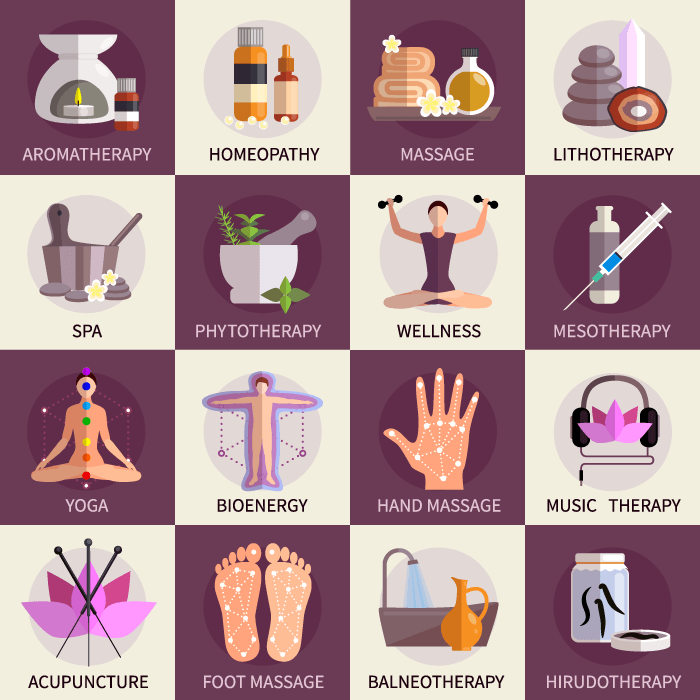
In the words of the world’s leading proponent of integrative medicine, Dr. Andrew Weil: “Integrative medicine is a healing-oriented medicine that takes account of the whole person (body, mind & spirit), including all aspects of lifestyle. It emphasizes the therapeutic relationship and makes use of all appropriate therapies, both conventional and alternative.”
So – integrative medicine is definitely holistic; it uses a conventional medicine toolbox; it uses a non-conventional medicine toolbox – including naturopathy. However, this enlarged integrative toolbox may or may not be applied at identifying the root cause of the illness. All integrative practitioners view the patient holistically and the most effective ones will be seeking the root cause of the illness, but root cause resolution is not a prerequisite to practicing this model of healthcare.
If you’re looking for an integrative medicine doctor in Las Vegas, please contact our office at (702) 616-4001.
Functional Medicine:
a personalized and integrative approach to healthcare which involves understanding the prevention, management and root causes of complex chronic disease. Functional medicine has taken from all the models discussed and offers the most comprehensive and effective approach to healthcare in the 21st century.
Conventional medical practices are integrated with non-conventional practices – the most important criteria being effectiveness & safety. It is practiced by licensed medical professionals originally trained in the reductionistic, diagnosis-based model of conventional medicine and who apply that thought process to appropriate acute medical issues. However, when dealing with chronic complex medical issues it employs a systems biology approach that views the person within a holistic framework and their problems within a biological network.
Functional medicine utilizes the most current scientific knowledge regarding how our genetics, environment and lifestyle interact as a whole system to diagnose and treat diseases based on patterns of dysfunction and imbalance – without necessarily treating the specific disease. Functional medicine treats the person who has the disease, not the disease the person has. For a more in-depth look at how Systems Biology is changing the practice of medicine click here.
Determining the root cause of the illness is an essential component of this system to the extent that a physician who does not practice in this manner is not practicing functional medicine. Symptom suppression is only used as a temporizing measure while seeking the root cause and when clinically necessary to optimize function of the patient.
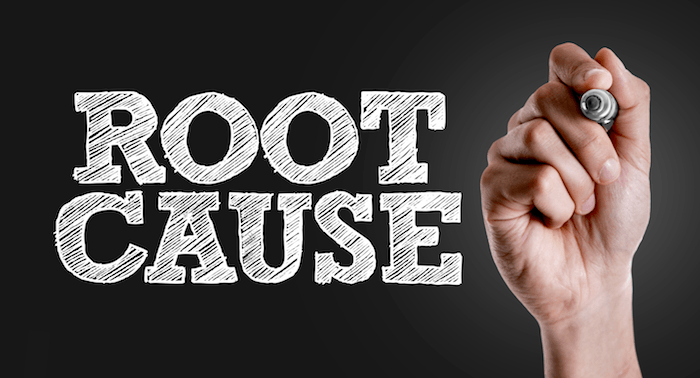
Functional medicine is built on the foundation of conventional medicine. Functional medicine is holistic in how it views patients and the problems they present with. Functional medicine includes the core concepts of naturopathic medicine within its system. Functional medicine incorporates the open-mindedness of integrative medicine when determining the most effective modality needed to get the patient well. Functional medicine has built upon all these other approaches to healthcare to make available to the patient the most effective medical system currently known.
Conclusion
A perfectly healthy human being is incredibly complex. Add to that an illness or imbalance and that complexity grows exponentially. All of the approaches we have discussed have their merits, but the obvious choice would be an approach encompassing all of them while seeking the root cause of the illness using Systems Biology to unravel the networks that make up who we are.
That is functional medicine and that is how we practice medicine at Southwest Functional Medicine.
Armen Nikogosian, MD is a functional medicine doctor and is the founder and medical director of Southwest Functional Medicine and the Autism Biomed Center serving patients in Las Vegas and Henderson, Nevada. Southwest Functional Medicine is located at: 3291 E. Warm Springs Road, Suite 300, Las Vegas, NV 89120. Dr. Nikogosian is also available to out-of-state and international patients by remote consultation. To learn more about how we can help you click here or contact us directly.
Functional Medicine Within the 3D Medical Spectrum
How do you determine good medicine from bad medicine?
If you are reading this post, it is likely that you are interested in achieving the best health possible for you and your family. Over the past 30 years, there has been an explosion in healthcare options available to the average American and sorting through these options can be daunting and may feel like navigating a minefield at times. The aim of this post is to dispel some of this uncertainty and give you a framework for what constitutes good medicine, bad medicine and everything in between.
To get a complete picture of both good and bad medicine, one has to look at it in three dimensions.

The first dimension is the 4 objective criteria establishing the foundational spectrum between good and bad medicine. This is a number line and the foundation for the 2nd and 3rd dimension. Poor quality here (or low number, if you think of it in mathematical terms) will make it very difficult to near impossible for the full three dimensional model to ever reach “good medicine”. This dimension represents the therapy itself – the drug, herb, supplement, medical device, surgical procedure etc.
The 4 objective criteria are:
- Safety. Primum non nocere or ‘First, do no harm’. This point is by far the most important; risky therapies should only be performed in the gravest of circumstances – such as life-threatening or disabling illness.
- Effectiveness. How well does the treatment or therapy perform? This can be a straight-forward answer for most single therapies. For whole medical approaches (such as functional medicine, conventional medicine, complementary medicine etc.) it can be challenging to answer this question without taking into account the 2nd and 3rd dimensions.
- Practicality. How practical is the treatment or therapy? A very safe, effective, evidence-based therapy is not good medicine if it costs $10,000 per treatment or you have to travel halfway around the world every month to receive it.
- Evidence. What level of evidence supports the therapy? The levels of evidence can range from experimental (no evidence – but may be a good idea) to clinician experience/case reports (some evidence – but may not have been validated by other clinicians or scientists) to various levels of scientific studies of which the gold standard of evidence is the double blind randomized controlled trial (DBRCT).
The 2nd dimension is the continuum between a holistic and reductionistic view of disease. This has been called by some as the art of medicine vs. the science of medicine, but I find that terminology misleading in that it implies holistic practitioners are unscientific and reductionistic (or conventional Western) practitioners are not creative or imaginative. The art of medicine encompasses science, creativity, holism and reductionism – they all play important roles when the need arises. Rather than representing absolute numbers (like the 1st dimension) this dimension represents ranges. The ideal range being the full spectrum from holistic to reductionistic. Good medicine should encompass both views of disease, as the most profound answers arise from the synthesis of the two . The style, philosophy and experience of the individual practitioner is the greatest determining factor in how much of this spectrum is delivered to the patient, but the underlying medical approach which individual practitioner follows will have great influence as well. This dimension represents the clinician and his or her approach to the practice of medicine.
The 3rd dimension is the continuum between illness and wellness for the patient. This dimension overlays both the objective criteria and the holistic/reductionistic continuum. Whereas the 1st dimension reflects primarily the therapy and the 2nd dimension the individual practitioner, this dimension represents the medical tradition or system of medicine being followed. The goal is wellness through enhanced health. Medical traditions which strive only for average health are neither good nor bad medicine – they are only as good as they get their patients: average. Conventional medicine scores average on this dimension. Their primary goal is to pull the patient away from illness to average health but not necessarily transcend beyond this.
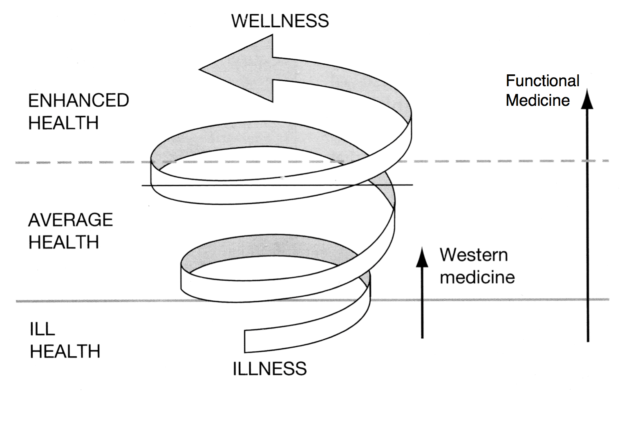
Where does functional medicine fit into all this? As a functional medicine practitioner, you can probably guess what my answer will be. Rather than answer it for you, I suggest you visit a functional medicine doctor and come to your own conclusions.
Thank you and stay healthy!
Did you know that Dr. Nikogosian also offers remote consultations? Click here to learn more.







